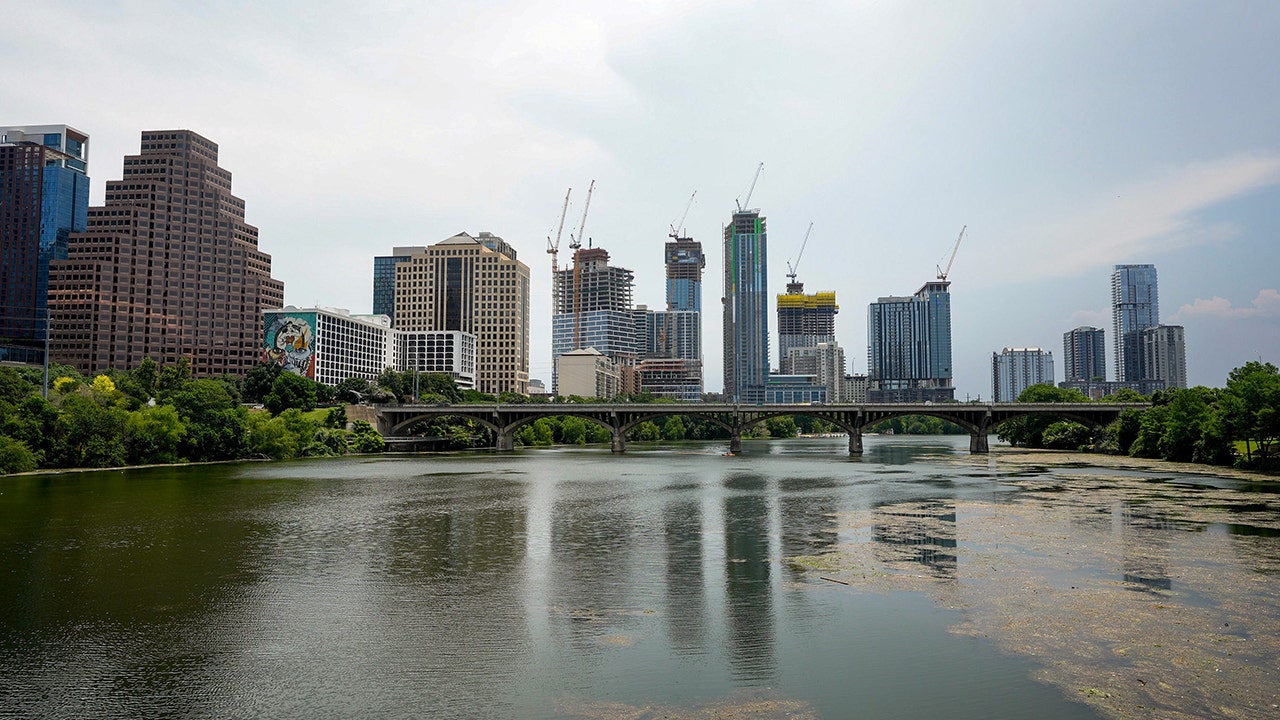It was a case of the “fast and the furriest,” reported Mount Shasta Police, who caught a black bear in the driver’s seat of a car, honking the horn.
As many as four bears paid a nighttime visit last Monday to a home just outside Mount Shasta city limits. They foraged through trashcans, gobbled pet food and climbed into the unlocked vehicle, said Mount Shasta Police spokesperson Amber Orrey.
A police officer caught the “hairy situation” on a body camera when he arrived at the home with a Siskiyou County Sheriff’s Office deputy, Orrey said. The two officers were checking out the property after the homeowner called to report the bear sightings.
“Just “when you think it’s a quiet night shift … a bear jumps out of a car,” wrote Orrey in a post on the police department’s Facebook page. The post accompanied video of one of the bears darting away from the parked vehicle as police approached.
Close up of a car interior after a bear searched it for pet food. Black bears visited the residence, located just outside of Mount Shasta’s city limits, on Monday, May 12, 2025, according to Mount Shasta Police spokesperson Amber Orrey.
While it was dark, law enforcement had no trouble finding the address, according to Orrey. The bear in the car was bumping the horn, making it honk, as it shredded the interior. It was likely looking for cat food the homeowner reported stowing in the vehicle, she said.
“It’s not Goldilocks you gotta worry about — it’s her four fuzzy accomplices. Papa Bear’s knocking over trash cans. Mama Bear’s making herself at home in the garage. Baby Bear’s swiping pet food. And weird cousin Yogi is being smarter than the average bear looking for a midnight snack,” Orrey wrote in the Facebook post.
Monday’s incident is a reminder that people can make human communities less attractive to bears by locking their car, garage and house doors, closing and locking ground floor windows, securing trashcan lids and never leaving pet food or other edibles outside, wildlife experts said.

Black bears visited a residence just outside of Mount Shasta’s city limits on Monday, May 12, 2025. The animals foraged through people’s trash, and tore up a car interior – probably looking for some cat food stored in the vehicle, according to Mount Shasta Police spokesperson Amber Orrey.
Note to readers: If you appreciate the work we do here at the Redding Record Searchlight, please consider subscribing yourself or giving the gift of a subscription to someone you know.
Bears forage human communities for birdseed and pet food
California’s black bears — which range in color from light blond, to red and brown, to black — are a boon to ecosystems, dispersing seeds through their scat. These omnivorous scavengers will eat fruit and plants, small animals including pets and livestock, trash and human food, according to wildlife biologists.
But oh, how they love pet food, which is usually rich in protein, said wildlife biologist Stacy Anderson with the California Department of Fish and Wildlife’s Siskiyou County Unit. They’ll happily dine on livestock feed and birdseed, too.
The Mount Shasta Police Department gets a lot of calls about bear sightings and damaged trashcans in late spring, Orrey said. That’s when Siskiyou County bears are waking up, coming out of torpor. And they’re hungry.

A bear sleeps in a hollow under a log. Such locations are typical for bear hibernation, biologists say.
More: Not all California black bears got the memo about hibernating in this Shasta community
Bears may forage in human communities in summer and autumn, too, said Anderson, who reported rising numbers of Siskiyou County bear sightings over the past two years.
Other California counties are also tracking growing numbers of human-bear interactions.
The CDFW’s Shasta-Trinity unit receives more than 100 calls per year from people reporting bear sightings, the agency’s wildlife biologist Jennifer Carlson told the Record Searchlight last December. Most come from Lakehead, Shasta Lake and other areas surrounding Lake Shasta waters.
About half of the state’s black bear population lives along the North Coast and throughout the Cascades, according to the CDFW.

Bears will use the crawl space under a home to hibernate, according to BearWise, an information website about black bears.
More: The divide over California’s bear problem: Bill allowing dogs to ‘haze’ bears draws debate
Black bears rarely hurt humans, but wild animals are unpredictable. When a black bear does hurt a person, the animal is usually acting defensively because it’s scared, startled or defending cubs. Normally a bear will run away, but bears may become acclimated to humans if attracted to food sources in their neighborhoods, according to the CDFW.
Ultimately, it’s up to people not to attract bears with easy access to food and trash, wildlife biologists said. Go to wildlife.ca.gov/HWC/Black-Bears for a list of tips to help avoid bear encounters.
Record Searchlight Reporter Damon Arthur contributed to this story.
Jessica Skropanic is a features reporter for the Record Searchlight/USA Today Network. She covers science, arts, social issues and news stories. Follow her on Twitter @RS_JSkropanic and on Facebook. Join Jessica in the Get Out! Nor Cal recreation Facebook group. To support and sustain this work, please subscribe today. Thank you.
This article originally appeared on Redding Record Searchlight: Bear shredding car alerts Mount Shasta police by honking horn

:focal(0x0:3000x2000)/static.texastribune.org/media/files/4c6099691217e164d56d6ad50827073d/0705%20Hill%20Country%20Flood%20BB%20TT%2028.jpg)










:max_bytes(150000):strip_icc():focal(734x464:736x466)/Bobby-Flay-Tree-Cat-Nacho-070425-fa6657662c5d45d6a650b85f6d05ac30.jpg)

